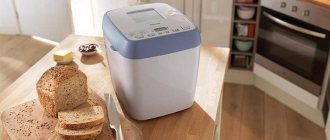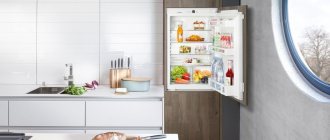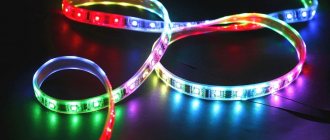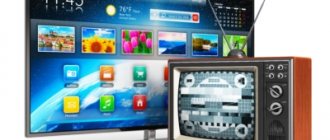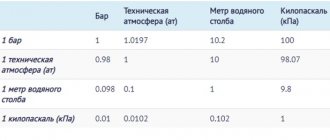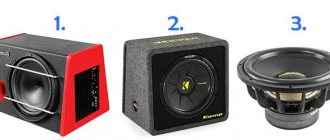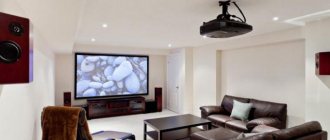When going to work, making weekend plans, going fishing or going on a family picnic, it is important for us to know what surprises to expect from the weather, how to dress ourselves and what to dress a child in. Hunters and fishermen, pensioners and summer residents - everyone makes their plans depending on weather conditions: air temperature, wind direction and strength, heavy rain or hot summer heat. Information on this topic comes to us from television receivers, radio channels and the Internet. However, the accuracy and completeness of such predictions, to put it mildly, leaves much to be desired. Home weather stations from different manufacturers will help you get the necessary information: expensive and budget, multifunctional and simple. The editors of the YaNashla website bring to your attention a review of the best weather stations for home in 2021, compiled based on reviews from customers and experts.
Where did the weather station begin?
The first instruments to help people predict the weather were the weather vane and the barometer. The first indicated the direction of the wind, the second warned of an approaching storm. The craftsmen gave them a very attractive appearance.
Medieval weather vanes still decorate the roofs of European cities. Later they were supplemented by a barometer, thermometer, hygrometer and anemometer, which form the basis of any weather station.
Additional features that you should pay attention to when choosing a weather station
The most important criteria for choosing a weather station were discussed above. But there are a number of additional nuances that also need to be taken into account.
Installation method
Depending on the installation method, weather stations can be desktop or wall-mounted. In principle, everything is clear here from the name: the first ones are placed on the table, and the second ones are mounted on the wall.
As a rule, all electronic models are desktop. They are compact, and therefore can be easily placed on the table. Although many electronic models have special loops on the back of the case. So, if necessary, they can be hung on the wall.
We recommend the product
Weather station La Crosse WS6890 Black/Silver
Not available
Functions: alarm clock, display backlight | Indicator: internal humidity, external humidity, weather forecast, internal temperature, external temperature |
Analog weather stations, as a rule, are wall-mounted. Firstly, they have more impressive dimensions. Secondly, they come in a stylish wooden case. Such weather stations look best on the wall, which is why they are mounted on it. Although there are also models that are designed for installation on a table.
Indicators
The number of indicators determines what information and to what extent will be displayed on the display. Typically, weather stations can show:
- Atmosphere pressure;
- internal humidity;
- external humidity;
- pressure graph;
- amount of precipitation;
- wind speed;
- Direction of the wind;
- comfort pictogram;
- internal temperature;
- outside temperature;
- wind chill temperature;
- dew point;
- a storm warning;
- weather forecast.
The presence of certain indicators depends on the model. So decide what data you want to track, and then select the appropriate weather station.
By the way, if the selected model has a weather forecasting function, then select it to show data for the next half day. Maximum - for the next 1-2 days. Why is that? The fact is that even professional meteorologists are not always able to predict the weather for a week in advance. What can we say about a home weather station?
Manufacturer
As for the manufacturer, the recommendations for choosing a weather station are extremely simple: buy a model from a company you trust. For our part, we can advise you to take a closer look at the products of the following brands:
- La Crosse (France);
- National Geographic (Germany);
- Glass device (China).
Models from La Crosse and National Geographic are distinguished by their excellent quality, wide functionality, and stylish design. And weather stations from Steklopribor attract attention primarily with their budget price.
Well, now you should have a better understanding of how to choose the right weather station for your home. And you can choose the optimal model yourself. You already know the basic rules for choosing a weather station, as well as the key criteria. All you have to do is just go through them and choose the solution that suits you based on type, functionality, price and other parameters.
Part of the equipment
Barometer
This device has been measuring atmospheric pressure for several centuries. The first barometer was created by the famous Florentine Torricelli, who in 1644 assembled a device from a plate of mercury and a hollow tube with a scale immersed in it. The column of mercury rose or fell in the tube depending on the atmospheric pressure. Two hundred years later, the barometer was improved by the Frenchman Lucien Vidy. Its main part was a thin-walled metal box with air pumped out of it. The dimensions of this box varied depending on changes in pressure. The vibrations of the box wall were transmitted to a spring connected to a movable pointer sliding along the scale.
Since liquid was not used in this case, the word aneroid (aneros, in Greek - not containing moisture) was added to the name of the barometer. The aneroid barometer is still used in analogue weather stations.
Hygrometer
It is used to measure the humidity of gases and air, which, as is known, is a mixture of gases. The degree of moisture saturation in the air determines how comfortable you will feel on hot summer or frosty winter days. Increasing this parameter in summer means exhausting stuffiness, in winter – bone-chilling cold. Lack of moisture in the air of a home has a detrimental effect on the health of residents. There are several types of hygrometers:
- Hair The principle of operation is based on changing the length of fat-free human hair stretched over a metal frame, depending on air humidity. The values are determined by the arrow on the scale. The device is simple and cheap, but fragile and not particularly accurate.
- Film. It works on the same principle as the hair one. Instead of hair, an organic film is used, connected to the arrow. The arrow is equipped with a weight. In conditions of increased dampness, the film stretches under the influence of a load, causing the needle to move along the scale. As the moisture content in the air decreases, the film contracts, dragging the arrow along with it in the opposite direction. The advantages and disadvantages of a film moisture meter are the same as those of a hair moisture meter.
- Weight. It is a U-shaped tube filled with a hygroscopic composition. To determine air humidity, a certain amount of it is driven through the device with a special pump. The percentage is calculated by the difference in the weight of the hygroscopic filler before and after pumping air, using a special formula. The downside is the need for mathematical calculations to obtain the required information. This is a long journey that not every user can do.
- Ceramic. It works on the principle of determining the difference in electrical resistance of a ceramic insert.
- Electrolytic. The principle is the same as in the previous version. The resistance of the electrolyte is measured, which changes depending on the amount of moisture in the air.
- Condensation. Gives the most accurate readings. The amount of condensate falling on the mirror surface after forced cooling is analyzed. The relative value is determined by an electronic thermometer located under the mirror of the device.
Thermometer
Everyone has been familiar with this device since childhood. Mercury thermometers measure body temperature. Alcohols are used to determine the degree of heating of air and water in a bath or aquarium. The operating principle is the same in both cases. The contents of the flask (alcohol or mercury), expanding when heated and contracting as a result of cooling, rises or falls along a hollow tube coming out of the flask itself. The tube is located along the scale.
We use the Celsius scale. In the USA, Belize, the Bahamas and the Cayman Islands, the Fahrenheit scale is used. Zero degrees Celsius is equal to 32 degrees Fahrenheit. Engineers and scientists use the Kelvin scale in their calculations, where o corresponds to minus 273.15 degrees on the Celsius scale. With such freezing, the thermal movement of molecules stops, and it is simply impossible to cool the body even more. I call this state of matter “absolute zero”
Interesting! Initially, Anders Celsius considered the boiling point of water to be “zero” on his scale. Accordingly, at 100 degrees the melting of ice began. The debate about who turned the Celsius scale to its present position, in which water boils at 100 degrees and ice melts at zero, continues to this day. Some sources claim that Carl Linnaeus was the first to “reverse” the scale, others name Morten Stremer, a student of Celsius. Still others are sure that Celsius himself did this, on the advice of Stremer.
In addition to mercury and alcohol thermometers, mechanical thermometers are widely used. The principle of operation is the same as that of mercury and alcohol. The active element in these devices is coiled metal strips or bimetallic plates.
An electronic thermometer compares the resistance of a conductor, which changes as the temperature of the medium fluctuates.
To monitor the state of a substance in technological processes, thermocouples and resistance thermometers are most often used.
Weather stations with symbolic display
Based on the way information is displayed on the weather station display, there are two types:
- Digital display – the received data is displayed on the display in the form of digital information about temperature, wind speed, etc. Typical for low-functional devices, for example, digital thermometers.
- Digital and symbolic. Graphical display of weather conditions involves inducing data about weather conditions in the form of graphic images.
Weather information appears on the screen in the form of symbols: clear weather in the form of a sun icon, rainy weather in the form of drops, cloudy weather in the form of clouds, snowfall in the form of snowflakes, night time is indicated by an icon in the form of a month, etc. This display method is more informative compared to digital display.
Some models are equipped with animated symbol display, in which weather and nearby forecast data are displayed in the form of moving objects.
The dynamics of changes in temperature or pressure are often displayed on the display of electronic devices in the form of graphs.
The symbolic display of data on the screen of a weather station is easier to perceive information compared to digital. Graphic symbols are better visible on the screen, allowing you to see the information you need without getting close to the device.
The image on the display can be color or monochrome depending on the model of the weather control device. Modern devices can be equipped to transmit a three-dimensional weather forecast by highlighting crystals that indicate a certain state.
Some models are equipped with the ability to change the color of the display depending on the weather conditions outside. Thanks to this, information is easily recognized without having to read the information on the screen.
Home weather stations, their types and capabilities
The weather forecast from a TV announcer or from the Internet is no longer satisfactory for many, since it only informs about average air temperatures and possible precipitation in the region. Based on “averaged” data, you can get caught in the rain or dress inappropriately for the weather. It is important for a modern city dweller to have information about the direction and strength of the wind, to know the magnitude and possible daily fluctuations in atmospheric pressure. This information allows you to plan your day more productively. For people who are weather-sensitive and prone to colds, additional information will help them avoid health problems. To observe and obtain complete synoptic information, you need a home weather station. Depending on the functionality, they can be divided into analog and digital.
Analog stations
Perhaps the most “ancient” type of home “weather forecaster”. They are equipped with mechanical instruments showing the current value of atmospheric pressure, temperature and air humidity. All of them have been registered in houses and apartments for a long time. A thermometer is still installed outside the window and in the room. A barometer could often be found in homes in the 19th century. Placed in wooden, richly decorated cases, they not only predicted bad weather, but also decorated the interior. A modern home analog station can combine a barometer, thermometer and hygrometer in one housing. The finish of the case can be different, from plastic to mahogany. Some devices are built into a metal housing. Home craftsmen can assemble something similar with their own hands. To do this, it is enough to purchase a pressure gauge, thermometer and hygrometer, choose the material and shape for the body, and then, as they say, it’s a matter of technology.
Such a home weather forecaster will not be able to give a forecast for tomorrow. He will show the owner the initial data, and he will have to draw the conclusions himself. This has its own romance.
Digital devices
This type of equipment differs from analogue options primarily in the presence of a weather forecasting function for the near future. The equipment includes external and internal temperature sensors, a hygrometer and a barometer. The connection of sensors to the module in budget options is carried out via wires. More advanced and expensive models are equipped with a wireless remote sensor that transmits radio signals to the module or communicates via Wi-Fi.
The number of different external sensors in the best models reaches 5 pieces. In addition to the basic set, the equipment of advanced models includes an anemometer - a device that measures wind speed and direction. The indoor unit can be powered by batteries or accumulators, the electrical network or a solar panel. Digital models are available in desktop and wall-mounted versions. There are even window gadgets - small, lightweight gadgets that are attached with tape to the window glass.
Which weather station is better to buy?
Let's figure out what weather stations exist and how to choose the right device.
What can you use a home weather station for?
A home weather station, depending on its functionality, can be useful in several areas. First of all, it shows the temperature outside the window in a specific area, which provides more accurate information than the weather forecast on the Internet or television. This helps to plan work in the yard, at the dacha or construction of a fence so that rain or strong winds do not interfere with what was planned. For gardeners, the device will indicate the approach of frost. Of course, most users need a weather station to dress for the weather.
An online forecast may not be accurate because it gives the average temperature for the city and only uses the probability of precipitation as a percentage. A home weather station takes local rather than global readings into account, so its forecasts are more accurate.
The presence of a lunar calendar in the device will tell you what the current tide cycles are, as well as where the fish are going (into the depths or towards the shore). This will give fishermen information about favorable days for biting.
The indicator of atmospheric pressure and humidity will tell weather-sensitive people when they should not overload themselves in order to maintain health on unfavorable days. Accurate indicators make it possible to plan a schedule taking into account your well-being.
More advanced versions of weather stations collect information from sensors and transmit them to the smart home system so that the latter regulates the operation of climate control equipment.
Analog or digital weather stations
Understanding the purpose and usefulness of a weather station in the house, let's delve into the technical parameters of the models and consider the available types of weather stations.
Mechanical weather station
Most often it is made in a polished wooden case and can be wall-mounted or table-top. It uses analog type dials with mechanical action. Alcohol thermometers are also used to display temperature. Such devices are capable of displaying atmospheric pressure (barometer), air humidity (hygrometer) and temperature. Models with barometers have a weather forecasting function, where the station determines the nearest approach of rain, wind, storm, drought or heat.
The disadvantage of mechanical weather stations is that they only show the temperature inside the house. But in appearance, these are very beautiful devices that can be an excellent gift and serve as decoration for any room. Premium options can be finished with stone and wood carvings.
Options for analogue weather stations:
Digital weather station
Digital weather stations use a base with a display. It processes the signals coming from the sensors and displays the information on the screen. The size of the latter can reach 10 inches, allowing you to view the display from a distance of 10 meters. Due to the electronic operating principle, high accuracy of readings is ensured. Externally, these are modern devices that fit seamlessly into an apartment or house filled with gadgets. Among the varieties of digital weather stations, there are models with and without sensors.
Home digital weather station with color display.
Home digital weather station with monochrome display.
1. Digital weather station without external sensors
A home weather station without sensors is called only conditionally. This means that there are no external sensors for measuring readings on the street. The device body has its own sensors, but they can only read the parameters of the ambient air, that is, inside a house or apartment. Such devices are used to monitor temperature and humidity levels. They are simple and do not require complex configuration before commissioning.
2. Digital weather station with sensors
This electronic device has remote sensors placed outdoors. Depending on the type of sensors, the weather station, while in the house, shows temperature (external and internal), humidity (outside the window and indoors), atmospheric pressure, wind speed and direction. This gives a more complete climate picture and helps you monitor the atmosphere at home and dress for the weather. Depending on the type of sensor connection, there are wired and wireless models.
Home weather station with external sensor.
Weather stations with wired sensors. The advantage of wired sensors is reliable communication between the main module and the reading devices. Another advantage is the constant power supply of the electrical device via cable. You don't have to worry about replacing batteries. But laying the cable takes time. You also need to think about the route of the wire so that it is not torn off by the wind and does not interfere with the passage. You will have to drill a hole in the window or wall to insert the cable.
Wired sensor and weather station.
With wireless sensors. Wireless sensors operate at a frequency of 433 MHz and transmit their readings via wire. The weather station processes them and displays them on the screen. The range of each model is individual and ranges from 10 to 100 m. This is also influenced by the number of obstacles on the way. Wireless detectors are easier to install, but maintenance requires periodic battery changes. In cold weather, batteries discharge especially quickly.
External wireless sensor.
Criteria for choosing a home weather station
When choosing a home weather station, pay attention to the following parameters:
- number of connected sensors (1-5);
- screen size to make it comfortable to take readings;
- what the device can show (wind, temperature, humidity, pressure);
- the size of the buttons (small keys may be inconvenient for older people to hit);
- the presence of a backlight to see readings in the dark;
- the ability to turn off the backlight or reduce its brightness for night rest;
- sensor location range;
- food type;
- dimensions and placement method.
Additional functions
A home weather station may have additional features that will be useful to a number of consumers.
Among them are:
- display of current time;
- alarm;
- weather forecast icons or clothing recommendations;
- radio;
- regular calendar with days of the week;
- moon calendar;
- USB connector for connecting to a computer and transferring weather data to other users;
- a projector that displays readings on the ceiling or wall;
- Displays the length of daylight hours with sunrise and sunset times.
As you can see, the functionality of home weather stations is quite large, but the presence of each option increases the cost of the device.
Criteria for choosing a weather station
Home weather forecaster in the interior
When choosing a “mechanical meteorologist” for your home, you should remember that the model should fit organically into the interior. Internal modules are available for desktop and wall mounting. The housing of the internal module can be metal, plastic or valuable wood. Some manufacturers supplement the functionality of their devices with an alarm clock and a radio receiver.
Analog stations are also wall-mounted and desktop-mounted. Given their somewhat archaic nature, they are usually decorated in a retro style, with a body made of valuable wood. The design consisting of an aneroid barometer, dial thermometer and hygrometer looks very solid. A chronometer will also be included in this set. The shape of the case can also be very modern, or it can be a traditional barometer case of the 19th century, in the form of a steering wheel or anchor, reminiscent of the time of sailing ships, travel and discoveries.
The wall-mounted version in a wooden case has a significant weight, so special attention should be paid to the reliability of installation.
Screen Features
Information on the screens of some models is clearly visible only from a certain viewing angle. This is usually offset by screen backlighting. Budget models are provided with a monochrome screen, while expensive and professional models are provided with a color screen, which makes it easier to read information.
Purpose and scope of the weather station
A home weather station doesn't just show the weather forecast, it shows the local weather forecast. And you will know the indicators not for the city as a whole, but specifically in the place where you live. This is the main difference between the weather forecast shown by a weather station and similar data on the Internet. All this is ensured by sensors that collect the necessary information.
In addition, this device not only displays the current temperature, it can also predict the weather forecast for the next 12 or 24 hours. This is especially useful for summer residents and farmers, since in these areas of activity much depends on weather conditions.
A home weather station is also used for everyday tasks. For example, it can be used to monitor the temperature and humidity level in a room. And based on these data, create a comfortable microclimate for yourself or for a small child, whose body is known to be very sensitive to the slightest fluctuations.
For example, turn on a humidifier if the air in the room is too dry. Or vice versa - a dehumidifier if there is an increased level of humidity in the room.
We recommend the product
Humidifier WetAir MH-410W
In stock
Humidification area, m²: 31-40 | Functions: automatic shutdown, shutdown of humidification when there is no water, humidification, night light, humidification adjustment, timer, ionization | Humidification method: ultrasonic | Device type: humidifier |
What to pay attention to
Choice by price
When purchasing a budget device, the owner receives an internal module in the form of a monochrome display with a built-in barometer and thermometer, plus an external sensor with a wired connection. The screen displays the current time, temperature, and atmospheric pressure. If you have an external sensor, you can see the same climatic parameters for the street. The weather forecast for the next half of the day is indicated on the screen by symbols.
Sensor range
In mid-price range devices, the functionality has been expanded. The kit includes wireless sensors with different ranges. When purchasing a weather station for a country house, you should calculate the distance from the external sensors to the internal module and choose devices with a range of at least 100 meters. True, such a device will cost more.
Additional features
The color display with smart backlight allows you to determine the forecast for the near future by the color of your screen.
Some modules can project the necessary information onto the ceiling, wall or any other surface at the request of the owner. To do this, just turn the built-in projector in the desired direction.
Models with advanced functionality consume a significant amount of electricity. Regular batteries last for a couple of months. A good option would be to have a built-in battery that can be recharged from the mains. Ideally, powered by a solar battery.
Professional weather stations are equipped with additional sensors and devices that allow you to determine the direction and speed of the wind and give an accurate forecast for the next 12 hours and several days. In addition to monitoring climate data, the touch screen shows the date, time, moon phases and altitude. By touching the screen, you can switch channels from external to internal sensors to track the climate parameters in your home. Such equipment is equipped with a USB port that allows you to connect the device to a PC. This provides additional opportunities for accurate forecasting by checking Internet data.
Weather station in the “Smart Home”
Integration of a digital weather station into the Smart Home system allows you to automatically adjust the climate in residential premises depending on weather conditions. Using the data from the home weather forecaster’s external sensors, the smart home will increase the temperature in the heating system due to the predicted cold snap, reverse the onset of heat, and the smart curtains will automatically close on a hot sunny day. Based on the hygrometer readings, the smart home will turn on the humidifier. Such integration will save up to 40% of heat and electricity costs.
Digital weather station with barometer
Types of weather stations with and without barometer:
- Analog
- Digital.
Household analog stations consist of mechanical devices and elements. They include meters that determine temperature, pressure, air humidity, and some models have a built-in chronometer.
The body of these stations is made in a classic style from natural materials (stone, wood, metal).
Digital weather stations (electronic) are portable devices that record data on weather and climate conditions using electronic sensors.
They are equipped with a liquid crystal screen that displays temperature indicators at a specific point in time, air humidity levels, pressure, and a forecast for the near future.
Some models are equipped with magnetic storm forecast indicators, determine the level of solar activity, moon phases, and have a clock and calendar. The device operates from the electrical network or autonomously from batteries.
Some models operate from two sources. The digital meteorological installation, in addition to the barometer, thermometer, and hygrometer, includes additional devices:
- an anemometer and weather vane that measure wind direction and speed;
- rain gauge: determines the amount of precipitation;
- calendar, alarm clock, clock, etc.
- USB – output for data transfer to a personal computer.
Household weather stations with a barometer are necessary for people suffering from changes in blood pressure or vegetative-vascular diseases. Built-in barometers in mechanical instruments are divided into mercury and pointer.
The pointer device is called a barometer - aneroid. It has two arrows - one shows the actual pressure, the second is moved by the user to the position of the previous measurement reading.
The weather forecast for the next five or six hours is determined based on the dynamics of changes in the position of the arrow compared to the previous value.
The disadvantage of mercury barometers is that, unlike dial gauges, it is difficult to calculate the dynamics of pressure changes. There are mechanical weather units with a barometer that display information about weather conditions for hunting or fishing.
Digital devices show the value of atmospheric pressure with less accuracy than mechanical ones. A more important indicator of weather forecasting for them is the dynamics of pressure rise and fall. Indicators range from 195 to 1080 millimeters of mercury.
Selecting a model from the best manufacturers
Among the many firms and companies involved in the production of precision instruments, which include weather stations, one of the leading positions is occupied by the German company TFA.
Made with German precision and scrupulousness, its models are presented in different price ranges:
- simple devices without external sensors cost from 800 to 1500 rubles;
- home models with an expanded range of functions, packaged in elegant cases, are sold in the range from 2,600 to 5,000 rubles;
- the best models with a wide range of capabilities, complete with remote sensors and a USB port, are sold at prices ranging from 15,000 to 23,000 rubles.
The American company Assistant specializes in the production of consumer electronics, from calculators and intercoms, to laptops, tablets, smartphones, etc. Home weather stations with a minimum set of climate control will cost the buyer 1,500 - 2,500 rubles. A device with a remote wireless sensor will cost at least 3,000 rubles. The company's production is located in China.
The Hong Kong company EA2 has existed since 2010. Manufacturers of home weather stations and projection clocks, being one of the leading companies in this field. Its developments are distinguished by their minimalistic design, reliability and affordable price. Prices for the company's models range from 500 to 7,000 rubles. Model Ea2 EN209 is equipped with a high-temperature sensor Ea2 SR111, designed for baths and saunas.
In addition to the companies listed, the market offers popular models from the American companies Oregon Scientific and La Crosse, the German Beurer and Bresser, and the French Netatmo Urban. All of them supply the market with products with various capabilities, from the simplest to the most expensive, working via the Internet (Netatmo Urban) with integration into the Smart Home system, monitoring CO levels, etc.
For those interested in the products of Chinese companies, it is useful to get acquainted with the range of home weather stations on Ali Express - a global online platform offering decent quality electronics from China, various capabilities and at an affordable price.
Before making a purchase, it is advisable to collect complete information about them. You should find out what weather stations there are and how they can be useful. It wouldn’t hurt to listen to advice from users who have experience using similar gadgets from different manufacturers, with a minimum and an expanded set of capabilities. In order not to make mistakes when choosing a model, you need to determine the minimum set of functions that suits you as a user. The price level of the model depends on this. Recommendations from sellers or your friends who are experienced users will tell you which company model is best to buy. Before purchasing, it is useful to carefully read the description of the device, read the installation and operating instructions, and find out how much your model costs. Only after receiving answers to all your questions can you pay for your purchase.
Having decided on the selection criteria, we proceed to review the rating of high-quality home weather stations in 2021.
Buro H103G
Tenth place in our ranking is occupied by the budget weather station Buro H103G. A small desktop-based device with the possibility of wall mounting. In fact, it is an electronic thermometer that controls the temperature in the room and “outside”. The set includes one wireless sensor with a range of up to 80 m. The internal module has a monochrome display with calendar, clock, alarm and lunar calendar functions. The built-in sensor shows the percentage of moisture in the air. It is possible to connect two additional wireless sensors, which are purchased separately. The average price is only 595 rubles. According to buyers, the model has quite decent characteristics for the money.
Buro H103G
Advantages:
- accurate sensor readings;
- very compact device;
- durable housing that can withstand falls from a height of up to 100 cm;
- availability of weather forecast;
- reasonable price.
Flaws:
- monochrome display;
- lack of sensors for determining atmospheric pressure;
- no screen backlight.
Uniel UTV – 64
Number nine in our rating is the relatively inexpensive home model Uniel UTV - 64. The kit includes one wireless temperature control sensor with a range of up to 30 meters. The second sensor is built into the internal module equipped with a color display. Measuring range from minus 40 to plus 60 degrees. The upper threshold for measuring humidity indoors and outdoors is 99%, the lower threshold is 22%. The device informs about the weather forecast, shows the exact time, and has a regular calendar. Mains power is duplicated by the ability to operate on AA batteries. The charge indication is shown on the display. The average price of the device is 1148 rubles.
Uniel UTV – 64
Advantages:
- color display with clear images;
- presence of a barometer and weather forecast;
- possibility of connecting three sensors;
- accurate sensor readings.
Flaws:
- pressure is displayed in unusual units of measurement - hectopascals;
- All climate data is not displayed at the same time, you need to switch with buttons;
- difficulties with purchasing additional sensors.
HAMA EWS – 800
The eighth place in the ranking is occupied by the product HAMA EWS - 800, from the well-known German company HAMA. This is a home weather station equipped with a monochrome display with a built-in hygrometer, thermometer, and remote wireless sensor, with a range of up to 100 m. It can be used either desktop or wall-mounted. Shows forecast, indoor and outdoor air temperature, humidity and pressure. Additional functions include a clock and a regular calendar. Powered by AA batteries. There is a screen backlight.
HAMA EWS – 800
Advantages:
- fairly complete functionality;
- decent size display with extensive information;
- good lighting;
- simultaneous display of all climate data;
- graph of atmospheric pressure changes;
- reasonable price.
Flaws:
- if there are walls between the external sensor and the module, the range of action is reduced to 30 m;
- pressure units - hPa and inch of mercury;
- unclear instructions written in small font.
Ea2 Bl502
The model from the Hong Kong company Ea2 Bl502, which ranks seventh in our rating, received the best reviews from customers. A small desktop station for measuring climate parameters in the house. The set includes a wireless sea temperature sensor, with the ability to connect two more. Humidity control ranging from 20% to 99%. Sensor readings are accurate. The range is 30 m. The device combines the functions of a clock, alarm clock, and calendar with its main purpose. The average cost is quite affordable and is 1,790 rubles.
Ea2 Bl502
Advantages:
- accuracy of sensor readings;
- remote sensor without wires;
- possibility of mounting to the wall;
- nice design;
- clear image of the monochrome display.
Flaws:
- control buttons on the rear panel, which is inconvenient when the device is wall-mounted.
Oregon Scientific Bar806
In sixth place is the American station Scientific Bar806. Small (160 x 94 x 46 mm) indoor module with a monochrome display, built-in thermometer and hygrometer. There is a backlight. The external sensor communicates with the internal module at a distance not exceeding 30 m. It is possible to connect three external climate control devices. Additional functions include: weather forecast, clock and alarm clock, calendar, frost indicator. The purchase will cost the user 2100 rubles.
Oregon Scientific Bar806
Advantages:
- nice design that does not spoil the interior;
- autonomous power supply; works on lithium batteries for more than a year;
- high-quality assembly;
- solar battery;
- accurate sensor readings.
Flaws:
- The external sensor requires protection from the sun and precipitation.
RST 05301
Fifth in our review is the Swedish product RST 05301. This is an analog model with an aneroid barometer, dial hygrometer and alcohol thermometer. The company's designers have developed a series of products under the general name "Weatherman", characterized by an exquisite design in the style of the Russian Empire of the 19th century. RST 05301 is not only a stylish thing and a great gift, but also a weather station with precise instruments that allows you to monitor temperature, pressure and humidity in the room. The weather forecast is indicated by symbols on the barometer scale. Such a gift will cost buyers 3,940 rubles.
RST 05301
Advantages:
- stylish design;
- high accuracy;
- weather forecast.
Flaws:
- not found.
Brig+M-47 new
The fourth line of the rating is occupied by the products of Brig Russia LLC. The new analog station Brig+M-47 is equipped with the most precise German-designed instruments, housed in a designer wooden case. A dial thermometer and a moisture meter complete with an aneroid barometer complement each other perfectly. Fishermen and hunters appreciate the Brig+M-47 not only for its excellent design, but also for its accurate readings, which allow them to plan effective fishing.
Brig+M-47 new
Advantages:
- excellent German quality;
- accuracy of readings;
- thoughtful design;
- a wonderful gift and a very useful thing for a wide range of users.
Flaws:
- not found.
Netatmo Urban Weather Station
The top three in the ranking is opened by the French-developed Netatmo Urban Weather Station. This device differs from others in that it fully reveals its considerable functionality via the Internet. The set includes a backlit display, two remote sensors that communicate with the internal module via Wi-Fi at a distance of up to 100 m. Temperature and humidity are measured indoors and outdoors. The model is integrated into the Smart Home system. This allows the controller to control the heating system, automatically turn on humidifiers, close and open curtains and automatically start and stop the air conditioner. Information about climate parameters in and outside the home can be controlled from smartphones, iPhones and tablets using appropriate applications. The purchase will not be cheap, on average about 11,390 rubles.
Netatmo Urban Weather Station
Advantages:
- reliability and accuracy of instrument readings;
- multifunctionality;
- control of CO concentration (shows when the room requires ventilation);
- integration into the “smart home” system, automatic adjustment of heating and ventilation according to the readings of the station’s sensors, saving electrical and thermal energy.
Flaws:
- high price.
La Crosse WS 9057
In second place in the ranking is the La Crosse WS 9057 digital weather station, developed in the USA. The device has a large display in a plastic case, aluminum or wood color, with the ability to be mounted on a wall or used in a desktop version. Three external sensors can be connected to the internal module, but it is equipped with one, with signal transmission no further than 100 m. Monochrome display with a weather forecast function, displays temperature, pressure and humidity values inside and outside the room, can be used as a clock and alarm clock, regular and lunar calendars. Autonomous power supply from AA batteries. There is an indication of the battery charge, a choice of temperature and pressure measurement units. Average price: approximately 4,000 rubles.
La Crosse WS 9057
Advantages:
- stylish appearance;
- informative display;
- displays moon phases;
- accurate sensor readings;
- the ability to synchronize the clock with precise time signals via a radio channel.
Flaws:
- pressure units in hPa (no choice mmHg);
- the need to adjust the height above sea level depending on the floor;
- no display backlight.
Digital weather station with weather forecast
Using a meteorological installation, you can assess the weather conditions at a particular moment and create a forecast for the next six to twelve hours. The basis for forecasting is data that was recorded and stored over the previous few days.
Based on previously collected information and pressure readings, temperature values and the presence of precipitation are predicted. The weather calculation algorithm affects the accuracy of the readings.
For an accurate forecast, street sensors must be correctly installed and protected from direct sunlight and precipitation.
The more indicators (temperature, pressure, wind strength and direction, amount of precipitation, etc.) are involved in calculating weather data, the more accurate the forecast will be.
The digital device displays:
- relative atmospheric humidity;
- air temperature;
- if there is a calendar in the device - the current date, day of the week;
- if there is a clock - time;
- other necessary information depending on the functions of the device.
When using the weather forecasting function, it is recommended to select models that automatically download weather service data from the Internet.
Using the information received and its own data, the weather unit will calculate the weather forecast with the highest probability. To make a weather forecast, the device must have a function for storing temperature readings.
In some models, you can program a color scale for upcoming weather conditions, according to which the screen color alerts you to clear weather or precipitation.
Separation of home weather stations by type
Such devices are divided into wired, wireless and professional. The latter are more expensive and require skills in handling such equipment.
Wired devices are often budget options. The functionality is the same as for wireless ones, but the installation distance of the sensor from the unit is limited by the length of the wire. Usually this is 1.5÷5 m. In this sense, the convenience of wireless models, in which this distance reaches 100 m, is difficult to overestimate.
Convenient when all weather data is collected on one display
Which company's digital weather station is better to choose?
Among the companies included in this rating, there are both budget ones and those operating in the mid-price range. There are much fewer premium, expensive companies here. The leaders in terms of frequency of mention in our review are German brands.
The best manufacturers of digital weather stations, based on the results of an analysis of offers in this market, include:
- Bresser is a German brand whose products are manufactured in China. It comes with a warranty of up to two years. The company's weather stations are functional, versatile, easy to use and accurate in readings. They measure temperature and moisture levels both indoors and outdoors. External sensors are connected to the main unit wirelessly, which simplifies their operation, and transmit information at a distance of up to 30 m. The main advantages of this company’s products are light weight, high-quality housings, and high speed of response to weather changes.
- Hama - the company's devices are manufactured in China, but create serious competition for products from world-famous brands. They are not capricious, they work accurately, regardless of weather conditions and fluctuations in temperature, humidity, and atmospheric pressure. The company's devices measure their values in a wide range and display data in Celsius and Fahrenheit. They are characterized by a bright, sometimes color screen with good readability, large numbers and letters, and clear weather forecast graphs. The control buttons of the products are soft and responsive, they work on the first press. Sensors transmit information at a distance of up to 30 m from the main unit.
- Beurer is a family-owned German manufacturer of beauty and health products that began operations in 1919. It produces humidifiers and air purifiers, barometers, hygrometers, thermometers for the home, and digital weather stations. The latter have become popular due to the high accuracy of readings with an error of no more than 2%, well-animated weather forecast graphs, a highly sensitive barometer, and a bright backlit display. They are distinguished by a large number of additional functions - lunar and astrological calendar, alarm clock, pressure change indicator.
- TFA Dostmann GmbH& Co is another German manufacturer in this ranking that produces some of the best digital weather stations on the market. Its measuring instruments are intended primarily for home use. Their key features are the absence of wires in most models, the presence of various indicators: an alarm clock is on, radio signal reception, and display of data in the room. They have a round or rectangular shape, a fairly large display, and “obedient” control buttons. Using the company's devices, humidity is determined both indoors and outdoors.
- RST is a company specializing in the sale of hygrometers, thermometers, barometers, clock projectors, and home digital weather stations. The latter have a simple and understandable graph of changes in atmospheric pressure, they automatically adjust to operating conditions and are equipped with several alarm clocks, independent of each other. The screen displays information not only about the moisture level, but also the date and time of the measurement. Unlike competitors, products of this brand show pressure mainly in the classic mm value. rt. Art. Product cases are made of impact-resistant plastic in white and black colors.
- Oregon Scientific is an American company founded in the USA in 1989. The manufacturer is an expert in the development and production of smart home appliances. It has 35 representative offices around the world, as well as 30,000 points of sale of finished products. Digital weather stations under this brand are available in the form of an alarm clock and a walkie-talkie, and, depending on the model, are equipped with bright backlighting. With their help, it is possible not only to find out the current humidity and atmospheric pressure, but also to obtain a forecast in the form of animated icons for the next 12-24 hours. The accuracy of these results is approximately 95%.
- First is an Austrian brand that produces products for food processing and preparation, clothing, hair, body care, various audio and video equipment, as well as digital weather stations. Its devices simultaneously perform the tasks of a barometer, thermometer, and hygrometer, measuring atmospheric pressure and humidity outside the window and in the room. They have one of the largest sensor ranges - up to 60 m, display the day of the week, date, time, and allow you to select a time format between 12 and 24 hours.
- Uniel is a manufacturer of lighting and electrical products, in whose catalog you can also find some of the best home weather stations for domestic use. They measure indoor temperatures in the range from 0 to +70 degrees, outdoors - from -40 to +70 degrees. The company's devices make a weather forecast, indicate possible precipitation through animated graphs, and allow you to save maximum and minimum values in the internal memory. They are equipped with a built-in alarm clock with the ability to repeat the signal, as well as a clock with two formats to choose from: 12 and 24.
- Meteo guide - specializes in the production and sale of mechanical and digital meteorological instruments at affordable prices, used in both domestic and professional areas. Weather stations of this brand monitor changes in moisture levels and atmospheric pressure, automatically record minimum and maximum values in memory, and signal the risk of frost and ice when the air is critically cold. The company's devices have bright backlighting, and some even have two modes of operation. They display a graph of changes in blood pressure over the last 24 hours, which are easily interpreted even by non-professional weather forecasters.
